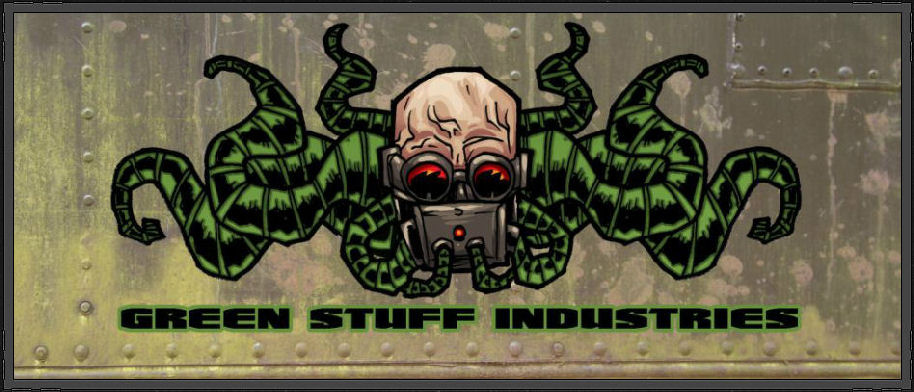Guest Post by Rusty Robot
As hoped, Rusty Robot is sharing a simple technique for modeling crushed beverage cans! In the test image of his latest diorama above, you can see one in the background. These little cans can make a base or terrain piece really pop with detail.
***
These are relatively easy to do and I think the skill level is basic. The only requirement is a light touch.
Ingredients:
- Old tube of ointment or toothpaste (metal tube)
- Brass tube
- Cotton bud
- Super glue
- Cardboard ("do not bend" envelope)
- Hobby knife
- Tweezers
- Files/sanding paper
Using your hobby knife, cut out a small rectangle - be sure it's straight and neat! Snip the end of your cotton bud/q-tip off, as the shaft is the ideal size for a coke can. Wrap your cut rectangle around it:
Cut off the excess and use small amounts of superglue to fix everything together. It doesn't matter if there is small overlap as you can file it away easily later. That being said, a crushed can will usually be placed on it's side anyway, in which case just place it seam side down. ADDITIONAL NOTE: If you are looking to make an uncrushed can that you just want standing upright, use the shaft of the cotton bud/q-tip. The cheap ones are usually hollow (as above) and can be used as the body of the can instead. Next, you'll need your brass tube. This measures 1/8 x .014mm. This basically means, the outside diameter is 1/8inch and the wall thickness is 0.014mm. I've found this size to be very ideal
This is where the thin cardboard comes in. You want to be working on this as it's relatively soft (see the impression left below). Working on a hard surface like a desk won't work. A cutting mat might even be too firm. Using the brass tube, press down into the sheet metal. Don't press too hard yet! You want to achieve a raised surface, like this:
Here I used the end of my paint brush handle to press in the center and make a recess. The paint brush handle is good, as they are generally curved and the bottom of a coke can is concave rather than flat.
Keep working both sides, with the paint brush and the brass tube until you are happy. When you are, use the brass tube again but this time start pressing a little harder whilst gently rotating the sheet metal with your other hand. The aim here is to score and punch the sheet metal through (saving the hassle of cutting it with scissors). You'll have a precise cut from this too.
Once done, glue it on what you made earlier using a generous amount of superglue. I recommend Technicqll's superglue here (as seen in review section). Yes, the end will be too big, but that's fine. The files and sandpaper will come into play here. Use the same method to make the top - just without the paint brush recess as the top only has a rim. Glue it all together and wait for it to dry.
Now, onto the filing/sanding. This part isn't as laborious as it may sound. The old ointment tube is very easy to work with here too. Sanding sponges are ideal (see review section). I used a metal file to work the larger parts of the edge, then side stepped to a 240 grit sanding sponge. I achieved this in less than 5 minutes:
Once both ends are sanded, I perforated a small hole in the top end to simulate the drinking tab. Then, VERY CAREFULLY and SLOWLY (if you're not it will all fall apart!), I used needle nose tweezers to pinch the can and achieve the final result:
For scale, here it is on the end of a cocktail stick.
I have discovered that it is easier to paint the can after crushing. Painting it before and you'll find that the paint will crack and peel off when you crush the can. I even varnished it to try and prevent this from happening and it still did...
In closing, it should be said that a lot more time can be spent using this tutorial to make it even more accurate to it's real-life counterpart. However, I've found that at this scale such small detail can be lost for time and effort spent. Nevertheless, have fun!













This is a really cool tutorial. Thanks for taking the time to write this up!
ReplyDeleteThanks Greg - always great to hear comments :) Be sure to post any results, should you try it out!
DeleteWow! Ibam seriously impressed!
ReplyDeleteProbably the BEST modelling tutorial and idea I have seen in ages.
Soooooo stealing this idea :)
Thank you, Captain. Steal away! Would love to see your results!
DeleteThat's ingenious. Awesome tutorial.
ReplyDeleteThanks Thor. Glad you like it :)
Delete